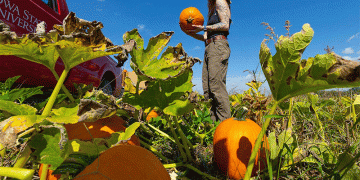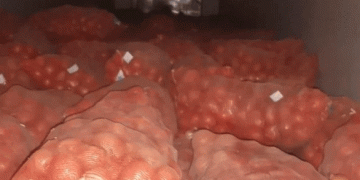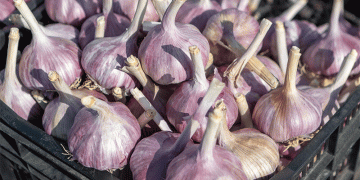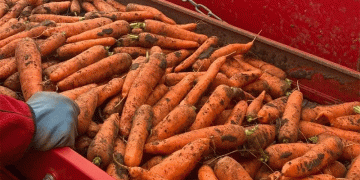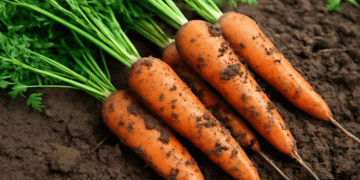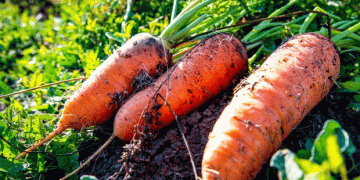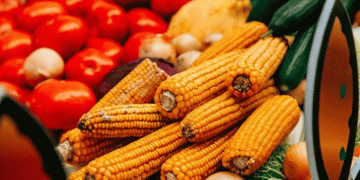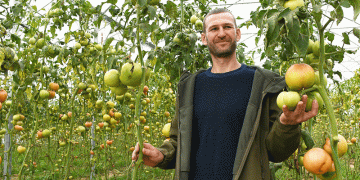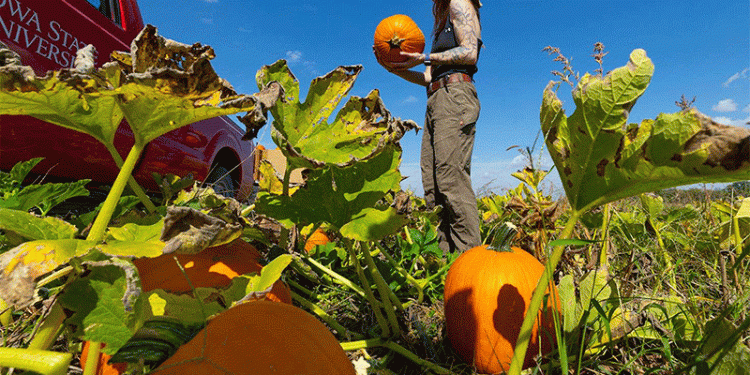At the Iowa State University Horticulture Research Station, the annual pumpkin harvest is a precise operation. In a single day, agriculture specialists Cole Hopkins and Amanda Groleau orchestrated the harvest of roughly 350 pumpkins, part of a larger effort to gather over 1,400 gourds. This carefully managed process is more than just a seasonal task; it’s a real-world example of efficient production planning, strategic partnership, and diversified sales channels that can inform any agricultural enterprise focused on specialty crops.
The defining feature of this operation is its clear, demand-driven production plan. Rather than growing for an uncertain market, the station cultivates with specific, pre-arranged outlets. The vast majority of the crop—approximately 1,200 pumpkins—is destined for Reiman Gardens to be carved for its “Spirits in the Gardens” Halloween event. This kind of institutional partnership provides a stable, bulk sales channel that guarantees a home for the majority of the yield, mitigating the financial risk inherent in seasonal produce.
The remaining 200-300 pumpkins are directed toward a direct-to-consumer model at the weekly campus produce sale. This approach captures a different segment of the market, one that often yields a higher per-unit profit. The station leverages its location and reputation to move the remainder of its crop efficiently, providing fresh, local produce directly to the community. This dual-channel strategy—combining a large wholesale-style commitment with a supplemental retail operation—is a model of risk management and revenue optimization.
This efficient use of a seasonal crop aligns with broader trends. According to the USDA’s 2022 Census of Agriculture, direct sales of agricultural products to consumers, institutions, and retailers totaled $9.7 billion, underscoring the importance of these diversified marketing channels. Furthermore, the partnership with Reiman Gardens highlights the growing “experience economy,” where agricultural products are key inputs for major events. The National Association of Consumer Shows reports that festivals and seasonal events are a multi-billion dollar industry, creating significant opportunities for growers who can reliably supply the necessary volume and quality.
The pumpkin harvest at the Horticulture Research Station provides a clear and effective blueprint for managing a seasonal specialty crop. The key takeaways are the power of pre-arranged partnerships to ensure a stable market for the bulk of production and the value of a supplementary direct-sales channel to maximize returns and connect with the local community. For farmers, agronomists, and agricultural engineers, this case underscores that profitability is not just about yield, but about having a disciplined, multi-faceted marketing and distribution strategy before the first seed is even planted. By planning the destination of their crop as carefully as they plan its cultivation, producers can build a more resilient and profitable operation.
